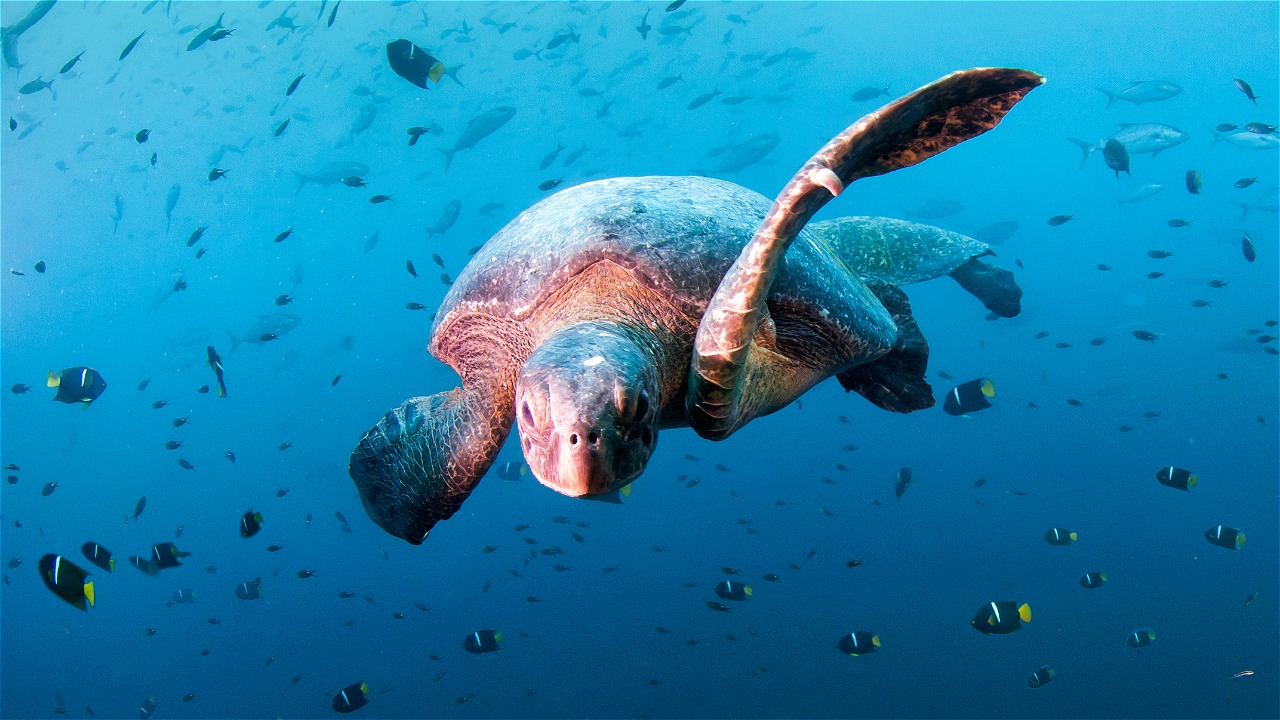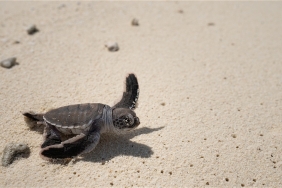LOOKING AT THE IMPORTANCE OF SEA TURTLES FOR ECOLOGY AND ECONOMY
By: Natalia Trita Agnika
The turtle is one of the ancient reptiles that is able to adapt until now. For this reason, this charismatic animal is often referred to as a living fossil. It's not just that fact that makes turtles an amazing animal, their range is also very wide. Indonesian waters are the most important turtle migration route at the junction of the Pacific and Indian Oceans.
Six of the world's seven sea turtle species are found in Indonesia. Four of them even lay their eggs on beaches along Indonesian waters, namely the Green Turtle, Leatherback Turtle, Hawksbill Turtle, and Olive Ridley Turtle. The beach in Abun, Papua, is the largest leatherback sea turtle nesting beach in the Pacific region. While the Derawan Islands, East Kalimantan, is the largest Green Turtle nesting beach in Southeast Asia.
The existence of sea turtles is very important, both in terms of ecology and economy. Green turtles (Chelonia mydas), for example, play a role in maintaining the condition of seagrass beds on the seabed. Hawksbill turtles (Eretmochelys imbricata) are sponge eaters on coral reefs, allowing corals to colonize and reefs to become healthy again. Turtle eggs that fail to hatch in their nests supply nutrients to the surrounding sandy environment. (Source: http://oceana.org)
From an economic perspective, the presence of leatherback turtles (Dermochelys coriacea) plays a role in maintaining the availability of marine fish because this species eats jellyfish, which are predators of juvenile fish. Thus, fish stocks as a food source are guaranteed. In addition, the presence of healthy sea turtles can be an attraction for ecotourism.
As a reminder of the importance of sea turtle existence, the world commemorates "World Sea Turtle Day" every June 16. This is important, given that the populations of six sea turtle species are already vulnerable to extinction, threatened, or critically endangered according to the IUCN Red List of Threatened Species. Sea turtles face a variety of threats, including habitat and nesting site destruction, environmentally harmful exploitation, and illegal trade.
One of the efforts to save sea turtles by WWF-Indonesia is the buffer zone reforestation program. This area is a conservation area that protects sea turtle nesting areas from various threats. Buffer forests become a natural carrying capacity for coastal areas. WWF-Indonesia realizes these efforts through the NEWTrees program with the hope that sea turtles that come to the beach have ideal nesting sites.
Hope for a better life for sea turtles is also pursued through the "Turtle Hope" program. This WWF-Indonesia program in Pangumbahan Beach, Sukabumi, opens opportunities for those who care to contribute to efforts to restore turtle nesting naturally. This is done by adopting a sea turtle nest. The adopted nests will be closely guarded by a patrol team empowered from local community groups. Not only that, the nests will also be marked with coordinates (tagging) so that they can be monitored virtually through geotagging.
People's daily lifestyles also have an impact on sea turtle populations. The bad habit of throwing plastic waste carelessly results in garbage being carried into the sea. Leatherback turtles, which usually eat jellyfish, often mistake the plastic waste for food (jellyfish). As a result, the indigestible plastic leads to the turtle's death. Disposing of garbage in its proper place and other green lifestyles are habits that should be implemented immediately. Learn examples of green lifestyles through the "Green Lifestyle WWF" sticker series which can be downloaded at Blackberry Messenger Shop.





